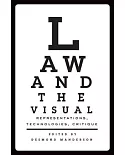Joseph Beuys (1921-1986) was one of the most original and influential artists of the twentieth century. Challenging the traditional confines of art, he embraced a broader, philosophically and
politically based practice formulated in the dictum "Everyone is an artist." His unique approach to the creative process transformed materials such as felt, fat, honey, blood, wax, copper, and
sulfur into fluent and expressive artistic media. Called the most olfactory artist in history, he preferred the smells of the pungent and decaying, just as he favored the indecent, ugly, and
disfigured over the polished, shiny, tasteful products of city slickers and social seekers. His long-term radical aims included the introduction of direct democracy through referendum, free
access to all educational institutions, and a restructuring of the economy based on ecological necessity.
The Essential Joseph Beuys was inspired by the idea of an imaginary Beuys exhibition unhampered by the problems connected with actual exhibitions, e.g., those of geography, insurance,
fragility, and the concerns of lenders. The book provides a definitive survey of the artist's work in every medium in which he worked--drawings and watercolors, sculptures and objects,
environments and actions, and multiples and printed works. Arranged chronologically and covering the four decades he was active (1945-1985), the book reflects the changes in Beuys's choice of
register, from the soliloquy of his early days to the dialogue of his period as a teacher to the powerful language of his public lectures to international audiences.
In his introductory essay, "A Lament for Joseph Beuys," Alain Borer summarizes the artist's oeuvre, drawing out themes of great complexity and relating them to Beuys' artistic and social
milieus.





















